Ducks have a unique anatomy. Their leg structure is quite different from other birds, which may make you wonder if they have knees.
Do ducks have knees?
Ducks do have knees! Their knees are hidden beneath feathers and have a different structure. Ducks use their knees for swimming and to take off and land. The joint-like appendages allow them to move their legs in different directions.
In this article, we’ll be exploring the anatomy of a duck’s legs and the evolutionary purpose of its unique leg structure. We’ll also compare a duck’s legs to that of a goose and chicken. So, let’s take a closer look.

Table of Contents
What Constitutes Duck’s Knees?
Duck’s knees are unlike what we know. Their knees are at the rear of their body, close to their tail feathers, making them look almost like they’re part of their feathers.
Ducks’ knees are made of flexible cartilage, which helps them move their legs in a way that allows them to waddle, swim, and take off from the water easily.
Another essential part of the knee is a hinged joint connecting the femur and tibiotarsus. This joint allows ducks to bend their legs forward, giving them more power when they push off the water.
Ducks also have several strong muscles that wrap around their knees and help them to stabilize when they swim. As if that weren’t enough, they have a special ligament that helps to keep their knee joints in place.
This anatomy makes ducks one of the most graceful swimmers in the animal kingdom.
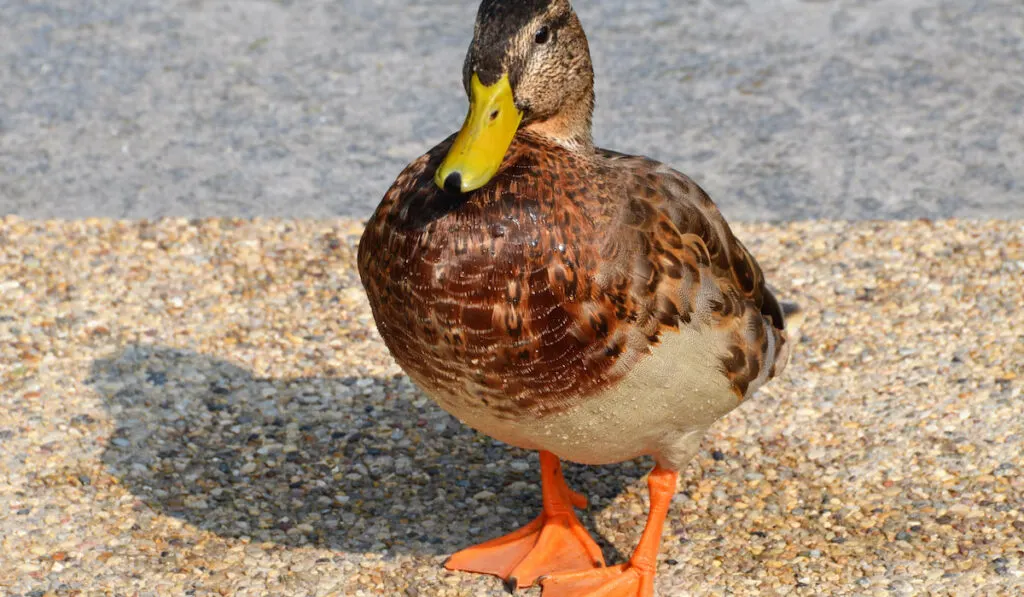
Leg Anatomy of Ducks
Ducks have legs comprising four sections: the thigh, shin, foot, and toe.
Surrounding the bones are strong connective tissues that strengthen the legs.
The middle sections have a flexible joint that acts as a knee. The knee joint allows the duck to bend and fold its legs, which is excellent for swimming.
The ankle of a duck is located at the base of its leg, just above the webbed foot and closer to the ground. It’s also more flexible, allowing the duck to walk and swim easily.
Ducks can also rotate their ankle joints in a circular motion, enabling them to paddle through the water easily. Examples of ducks that use this unique ankle joint to their advantage are the Mallard, Wood Duck, and Pintail Duck.
Thigh Structure
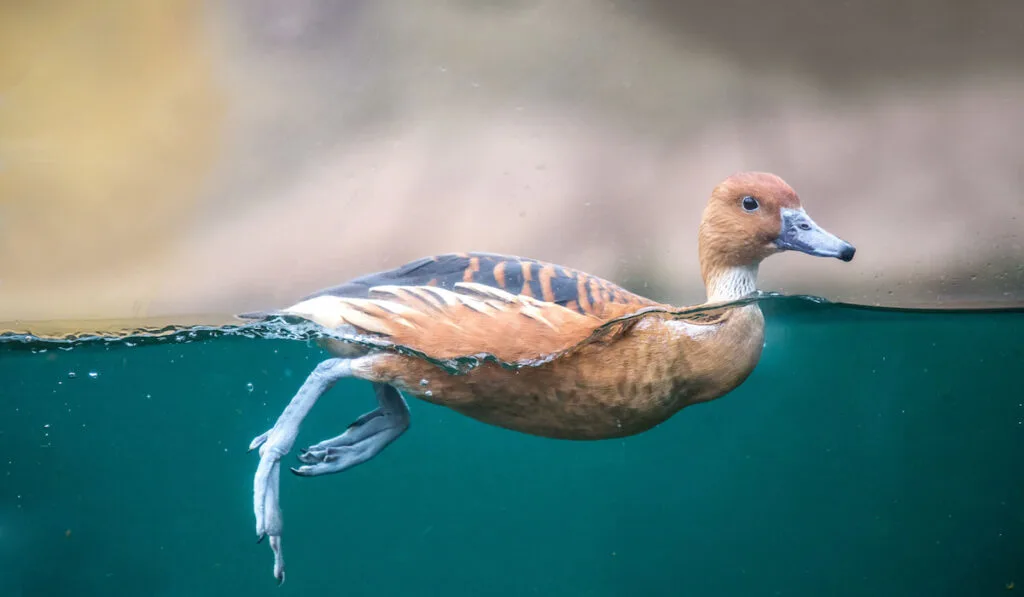
Ducks have a single thigh bone connected to the knee joint. The unique thigh structure helps them to propel themselves through the water.
The thigh muscles are connected to the femur, the longest bone in the duck’s body. They are powerful, and ducks use them to push off against the water to move forward.
Ducks also have a specialized tendon that runs from the femur to the ankle, which helps to keep the legs in the correct position when swimming. This tendon is essential for the duck’s ability to move quickly and efficiently through the water.
Shin Structure
A duck’s shin consists of two bones, the tibiotarsus and fibula, connected to the ankle joint.
The tibiotarsus is responsible for providing the necessary support for swimming and walking. The fibula is much shorter and helps to stabilize the ankle joint.
Both of these bones are covered in tough, leathery skin that helps to protect the bones and provide the duck with additional stability.
The shin structure allows ducks to thrive in aquatic environments and move effortlessly between land and water.
Below the ankle joint is the tarsometatarsus, which consists of tarsals and metatarsals.
The tarsals are the bones that make up the ankle joint, while the metatarsals are the long bones that connect the tarsals to the toes.
The tarsometatarsus also contains muscles that help control foot and toe movement.
This part of the leg is essential for providing stability and balance during swimming and delivering propulsion during flight. One study revealed that wood ducks typically fly at an average speed of 31.2 miles per hour.
Foot Structure
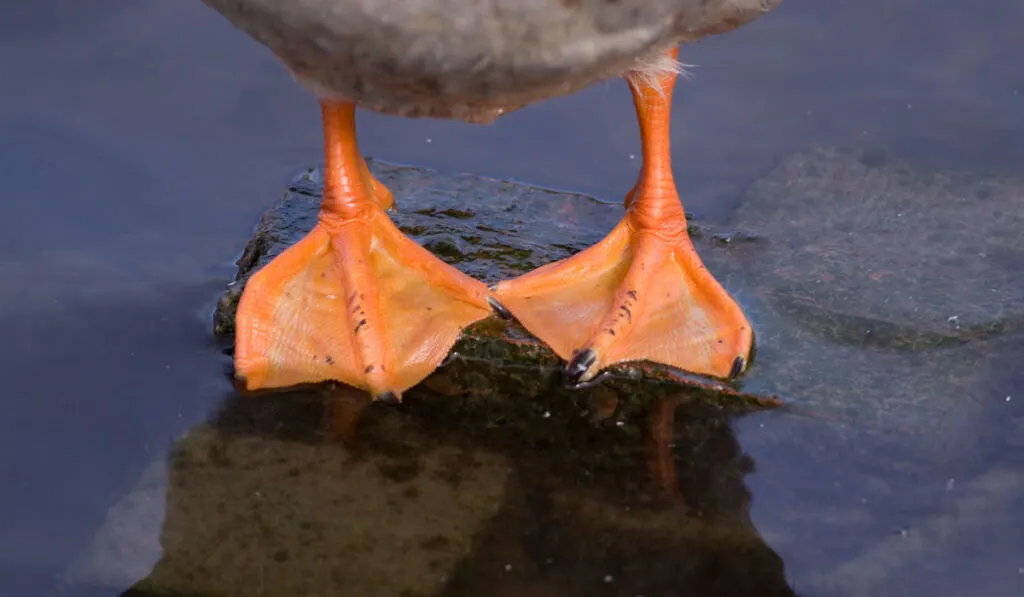
Ducks have evolved impressive feet that allow them to swim, walk, and climb. Their feet have webbed toes, long nails, and sharp claws that help them grip surfaces.
The webbed feet are formed by the fusion of four toes, providing extra propulsion while swimming.
Ducks also have a special tendon system that helps them to stay upright while swimming and to move quickly on land.
Toe Structure
Ducks have four webbed toes (palmate) on each foot, three pointing forward and one smaller one pointing backward. This helps them to paddle through the water more efficiently, as the webbing acts like an oar.
Diving ducks tend to have lobed hind toes. The extra lobes provide additional webbing and an enhanced capability to swim underwater.
The webbing on the feet helps ducks to maintain their balance. They can also curl their toes to help them grip surfaces on land.
This toe structure is what makes ducks such adept swimmers and walkers.
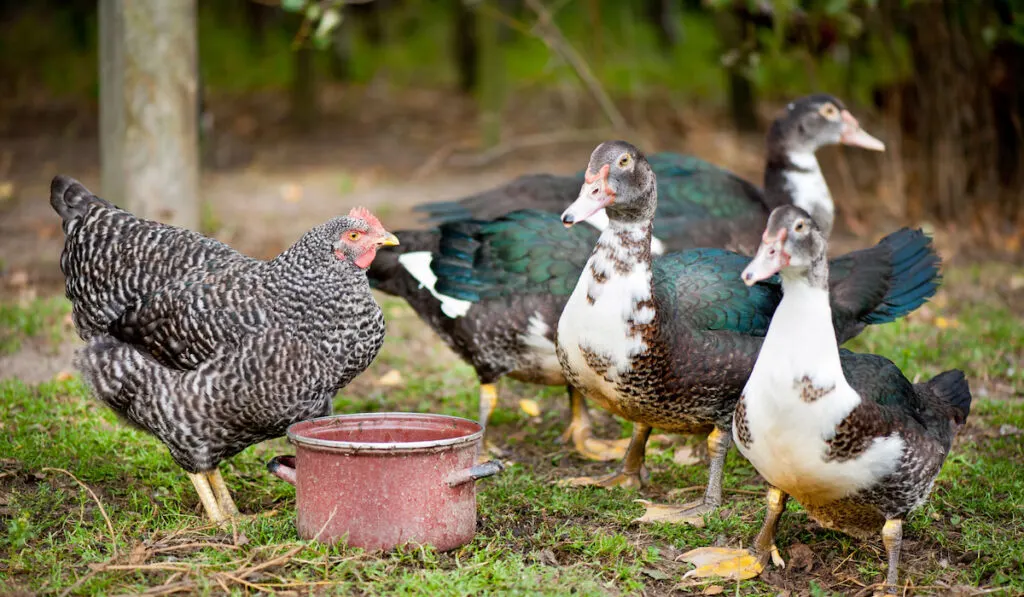
How a Duck’s Leg Anatomy Differs From That of a Chicken
Ducks and chickens are two closely related bird species, yet they have diverged in many ways. One of the most notable differences between the two is the leg anatomy.
According to a study on hind limb morphology, leg development in ducks occurs much faster than in chickens. This accounts for ducks’ longer and stronger hind limbs, allowing for efficient swimming and diving.
The hind limbs of ducks are also more heavily muscled, allowing them to paddle quickly through the water.
These adaptations allow ducks to move efficiently through the water, making them better adapted for aquatic life than chickens.
While ducks are known for their webbed feet, chickens identify with long, skinny toes with sharp and robust nails. This structure enables them to scratch the ground for food easily.
But like ducks, chickens also have knees. Their knees point forward and are located beneath the feathers.
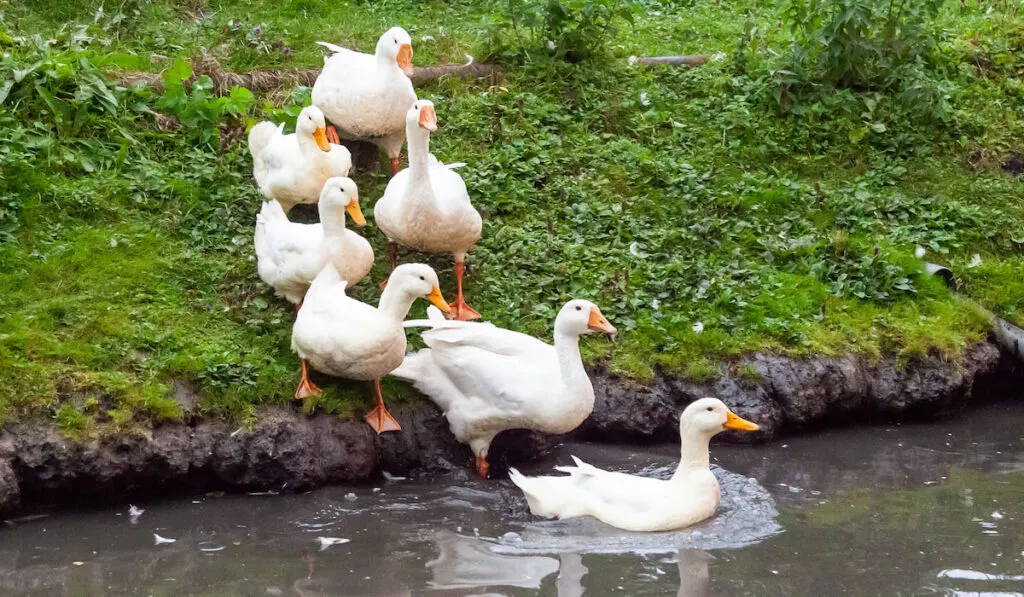
Duck and Goose Leg Anatomy Compared
Ducks and geese have a lot of similarities, but their leg anatomy is an excellent example of how they differ.
Ducks have shorter legs than geese, with webbed feet ideal for swimming and wading. The bones in the leg of a duck are also different, with fewer joints and a more streamlined shape.
Geese, on the other hand, have longer legs, although with more enhanced webbed feet. Their leg bones have more joints and a chunkier shape. This makes them better adapted for walking and running.
Both ducks and geese have a tendon that runs down the back of the leg, connecting the muscles to the bones and allowing them to move.
So, while their leg anatomy might differ, ducks and geese have the same basic structure.
Final Thoughts
Ducks have knees, although they are located much further down their legs than ours. Their well-adapted leg anatomy allows them to walk, run, and swim efficiently.
Ducks’ legs also contain a unique set of muscles that allow them to move swiftly in different environments. However, their leg structure resembles that of geese and differs from that of a chicken.
While the anatomy of a duck’s leg can be complex, understanding it can help you learn a duck’s unique adaptations.
Resources
- https://gsejournal.biomedcentral.com/articles/10.1186/s12711-015-0166-9
- https://www.ncbi.nlm.nih.gov/pmc/articles/PMC4647608/
- https://onlinelibrary.wiley.com/doi/full/10.1111/joa.12710
- https://poultry.extension.org/articles/poultry-anatomy/avian-skeletal-system/
- https://www.ducks.org/conservation/waterfowl-research-science/webbed-wonders
- https://sora.unm.edu/sites/default/files/journals/wilson/v070n02/p0184-p0187.pdf
- https://www.poultryclubsa.co.za/anatomy-of-chickens/
- https://www.audubon.org/news/webbed-feet-are-evolutionary-hit
- https://en.wikipedia.org/wiki/Webbed_foot
- https://veteriankey.com/basic-avian-anatomy-and-physiology/
- https://www.poultryclubsa.co.za/anatomy-of-chickens/
